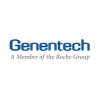
Phase I, Open-label, Dose-escalation, Safety and PK Study of AZD4877
LymphomaNHL1 moreThis study has two parts (A and B). The primary purpose of Part A is to find the maximum tolerated dose is for an experimental drug called AZD4877 based on the side effects experienced by patients that receive AZD4877 on a twice a week basis. For Part B, an additional 20 patients will be treated at the maximum dose identified in Part A. AZD4877 is an Eg5 or Kinesin Spindle Protein inhibitor that interferes with tumor cell division leading to tumor growth

phII Study of an HDAC Inhibitor in Very High-risk Relapsed/Refractory Hodgkin's Lymphoma Patients...
Hodgkin's LymphomaPRIMARY OBJECTIVE - To evaluate the efficacy (according to the International Working Group response criteria for Hodgkin's Lymphomas [7, 8, 9]) of daily oral doses of ITF2357 administered to very high-risk Hodgkin's lymphoma patients. SECONDARY OBJECTIVES To evaluate safety and tolerability of multiple oral doses of ITF2357 To assess the proportion of patients that, after ITF2357 treatment, can undergo high-dose salvage chemotherapy with either autografting or allografting

Gemcitabine and Pemetrexed Disodium in Treating Patients With Advanced Mycosis Fungoides or Sézary...
LymphomaRATIONALE: Drugs used in chemotherapy, such as gemcitabine, work in different ways to stop the growth of cancer cells, either by killing the cells or by stopping them from dividing. Pemetrexed disodium may stop the growth of cancer cells by blocking some of the enzymes needed for cell growth. Giving gemcitabine together with pemetrexed disodium may kill more cancer cells. PURPOSE: This was planned as a phase I/II trial studying the side effects and determining the best dose of gemcitabine hydrochloride when given together with pemetrexed disodium. Unfortunately, due to a lack of funding, the phase II portion was never conducted.

PXD101 and 17-N-Allylamino-17-Demethoxygeldanamycin in Treating Patients With Metastatic or Unresectable...
Adult Nasal Type Extranodal NK/T-cell LymphomaAnaplastic Large Cell Lymphoma59 moreThis phase I trial is studying the side effects and best dose of giving PDX101 together with 17-AAG in treating patients with metastatic or unresectable solid tumors or lymphoma. PDX101 may stop the growth of cancer cells by blocking some of the enzymes needed for cell growth and by blocking blood flow to the cancer. Drugs used in chemotherapy, such as 17-N-allylamino-17-demethoxygeldanamycin (17-AAG), work in different ways to stop the growth of cancer cells, either by killing the cells or by stopping them from dividing. Giving PXD101 together with 17-AAG may kill more cancer cells.

A Study of Dulanermin in Combination With Rituximab in Subjects With Follicular and Other Low Grade,...
Non-Hodgkin's LymphomaThis Phase Ib/II, open-label, multicenter trial is designed to evaluate the safety, pharmacokinetics, and efficacy of dulanermin when combined with rituximab in subjects with follicular, CD20+, B-cell Non-Hodgkin's Lymphoma (NHL) that has progressed following a response of ≥ 6 months duration to a prior rituximab-containing therapy. The multicenter, international, randomized Phase II part of this study will commence only after the safety and available pharmacokinetic data from the Phase Ib part of the study have been evaluated by the Sponsor and have been provided to participating investigators and the FDA.

S0349 Rituximab, Cyclophosphamide, Doxorubicin, Vincristine, and Prednisone With or Without Oblimersen...
Contiguous Stage II Adult Diffuse Large Cell LymphomaNoncontiguous Stage II Adult Diffuse Large Cell Lymphoma2 moreThis randomized phase II trial is studying rituximab and combination chemotherapy to see how well they work compared to oblimersen, rituximab, and combination chemotherapy in treating patients with advanced diffuse large B-cell non-Hodgkin's lymphoma. Monoclonal antibodies, such as rituximab, can locate cancer cells and either kill them or deliver cancer-killing substances to them without harming normal cells. Drugs used in chemotherapy, such as cyclophosphamide, doxorubicin, vincristine, and prednisone, work in different ways to stop cancer cells from dividing so they stop growing or die. Oblimersen may increase the effectiveness of anticancer drugs by making cancer cells more sensitive to the drugs. Combining rituximab and combination chemotherapy with oblimersen may kill more cancer cells

FR901228 Alone or Combined With Rituximab and Fludarabine in Treating Patients With Relapsed or...
Recurrent Grade 1 Follicular LymphomaRecurrent Grade 2 Follicular Lymphoma1 moreThis phase I/II trial is studying the best dose of FR901228 when given together with rituximab and fludarabine and to see how well FR901228 works alone in treating patients with relapsed or refractory low-grade B-cell non-Hodgkin's lymphoma. Drugs used in chemotherapy, such as FR901228 and fludarabine, work in different ways to stop cancer cells from dividing so they stop growing or die. Monoclonal antibodies, such as rituximab, can locate cancer cells and either kill them or deliver cancer-killing substances to them without harming normal cells. Rituximab may increase the effectiveness of chemotherapy drugs by making cancer cells more sensitive to the drugs.

Flavopiridol in Treating Patients With Relapsed or Refractory Lymphoma or Multiple Myeloma
Adult Lymphocyte Depletion Hodgkin LymphomaAdult Lymphocyte Predominant Hodgkin Lymphoma26 moreThis phase I/II trial is studying the side effects and best dose of flavopiridol and to see how well it works in treating patients with lymphoma or multiple myeloma. Drugs used in chemotherapy, such as flavopiridol, work in different ways to stop the growth of cancer cells, either by killing the cells or by stopping them from dividing.

Study to Evaluate MEDI-507 in Patients With CD2-Positive Lymphoma/Leukemia
LymphomaLeukemia1 moreFor primary objectives, we will determine the MTD and examine clinical responses and immune cell populations to determine an OBD, and describe the safety and tolerability of MEDI-507. For the secondary objectives we will look at the antitumor activity of MEDI 507, PK, serum concentrations, and immunogenicity of MEDI-507, as well as time courses of depletion and recovery of CD2 positive and total T-Cell populations.

Comparing Interleukin-2 (IL-2) Combined With Rituximab (Rituxan) to Rituximab Alone in Subjects...
Non-Hodgkin LymphomaThe purpose of this study is to determine whether interleukin-2 given 3 times weekly for 8 weeks in combination with rituximab is effective and safe when compared to rituximab given alone in the treatment of follicular NHL subjects that have never received rituximab as a treatment and are refractory or relapsed after previous chemotherapy.
